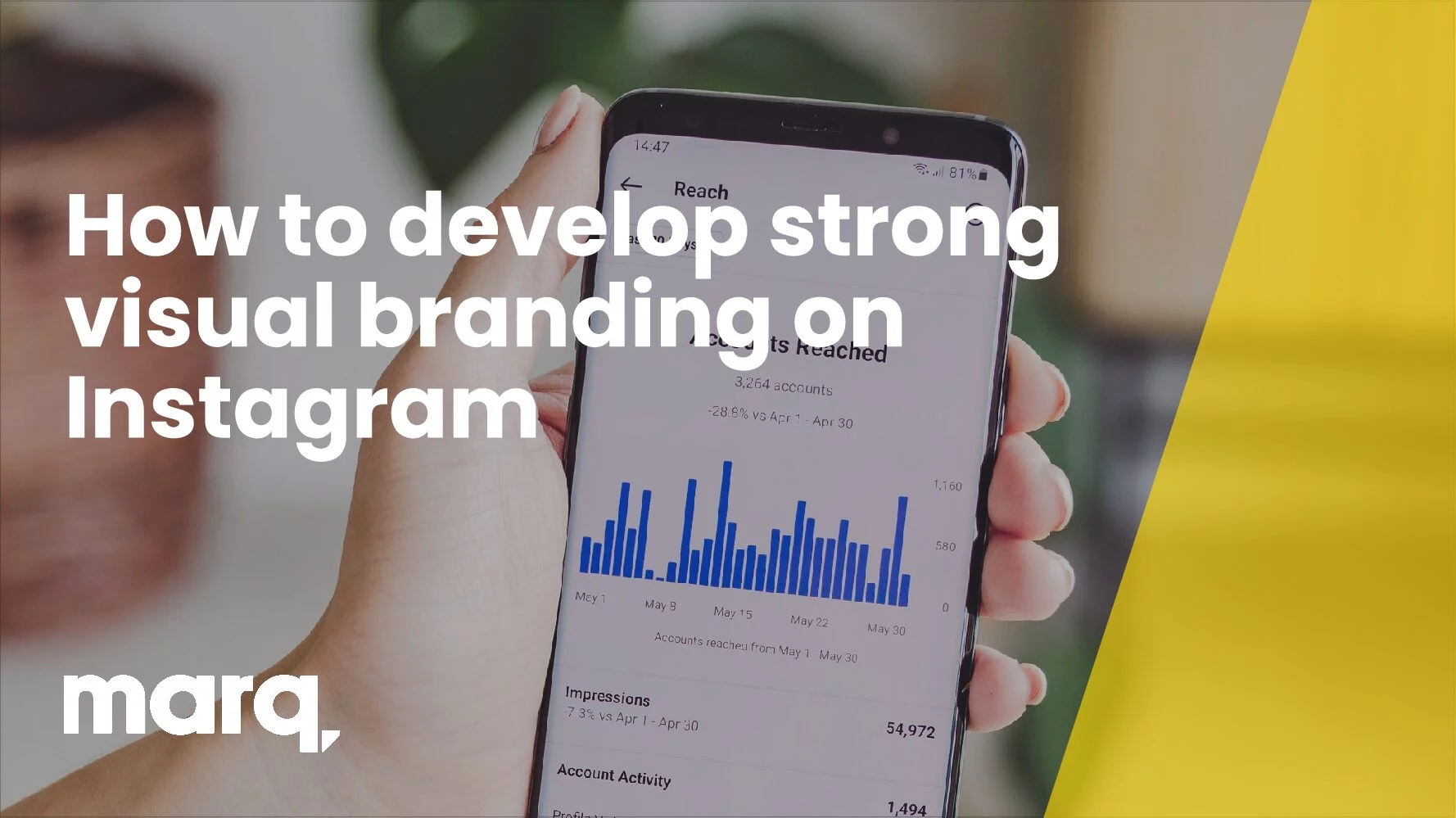Attracting a steady stream of new customers is one thing, but building customer loyalty is integral to a brand’s long-term success. And it begins with making a good first impression.
Think about it: when looking up a brand online, what do you remember about the ones that stand out? More than likely, it’s their logo or their overall style—like meeting a person wearing a great suit. When you run across that brand again, that image can stick with you—more so if you keep on seeing it in different places. This is a brand’s visual identity, and it’s what you want potential customers to remember.
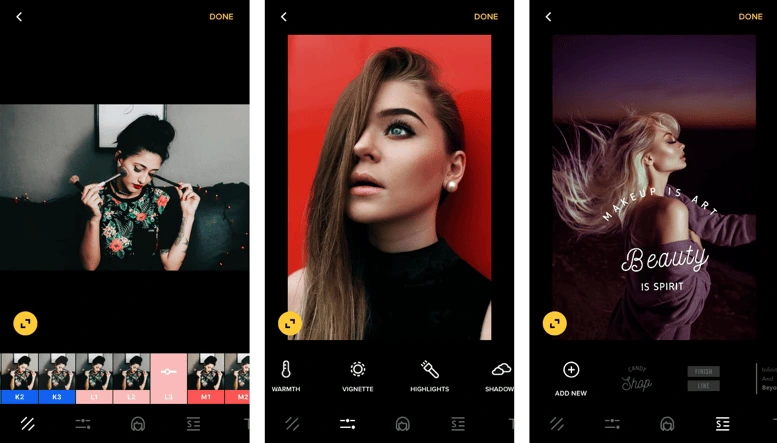
Related: 6 Instagram post ideas to boost sales
Having a memorable visual identity is important for social media, now a standard tool in the digital marketer’s arsenal. Instagram in particular is a powerhouse for using visual content to promote products and services, with Instagram stats showing 71% of U.S. businesses have an Instagram profile (25 million business profiles total). Standing out and earning engagement and followers depends on how well-defined your visual identity is. Here’s how to do it.
1. Know your brand inside and out
Before you create a visual identity, you need an actual identity first. Know the key aspects of your brand you want to communicate to your audience, then translate them into a visual medium. [![]() ]
]
Essentials for this step are copies (in writing!) of your brand’s mission, vision and values. These should be easily accessible on both your official website and any internal marketing documents. When you have them, answer the following questions to figure out what you’ll need to base your visuals on.
- Why was my brand made?
- What does my brand value the most?
- What words would I use to describe my brand?
- What does my brand offer in terms of products, service and experience that others do not?
- What kind of people do I want my customers to be?
Using your answers to the questions above, you can isolate a set of keywords closely associated with your brand.
2. Create a set of branding guidelines for social media
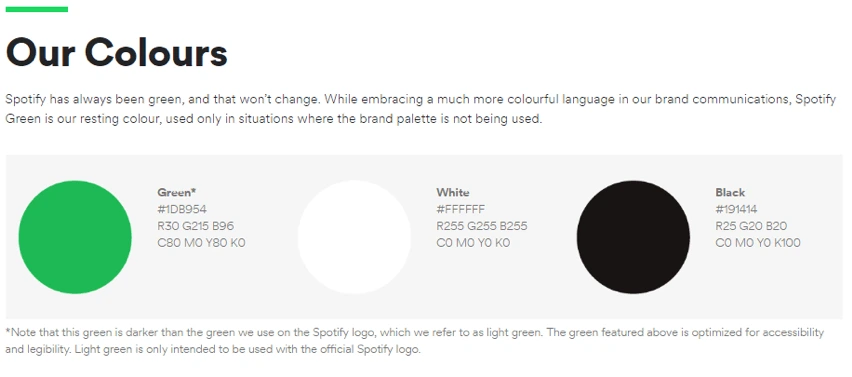
Source: Spotify
Do not underestimate the logistical power of good documentation. Brand guidelines enforce consistency in your branding, graphic design and marketing—keeping everything together so that everyone is on the same page when it comes to how to visually present your brand.
While it does take time and effort to create, having all these details in one place saves more time in the long run. It’s also a mark of professionalism: no having to go back and forth, emailing each other files and instructions every time you design something new.
Looking at some great branding examples, here’s what to include in your brand guidelines:
- The theme of your brand
- The feel and philosophy of your company
- Relevant taglines
- Font styles & typefaces to use
- Acceptable ways to use your brand logo, including its size & placement
- Color palette to use when associating with the brand
- Guidelines on composing imagery
3. Make social media post templates
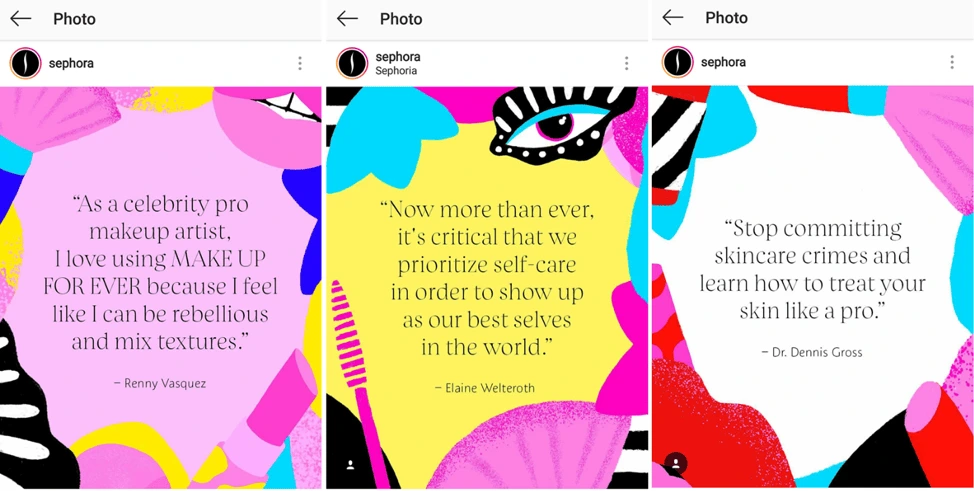
Source: Sephora
If you want to be remembered for a certain color or type of imagery, or if you want your logo to be visible on the feed and not just in your profile photo, turn to Instagram post templates. Some examples are backgrounds for text posts or borders to place around photos. They might include your logo, brand name or slogan and should be used when appropriate—not all the time, but just enough to be noticed.
You can use these templates when you share some of your favorite quotes to Instagram, which can make an otherwise plain text post look interesting. You can also place template borders on user-generated content that you’d like to share on your profile—especially useful if you’re running an Instagram giveaway or photo contest using a particular hashtag that can be incorporated into the template.
Remember to mix it up once in a while as well. While you want it to be memorable through retention, you don’t want it becoming stale. Try mixing it up every month or two and changing it according to season or campaign.
4. Have a consistent photo-editing style
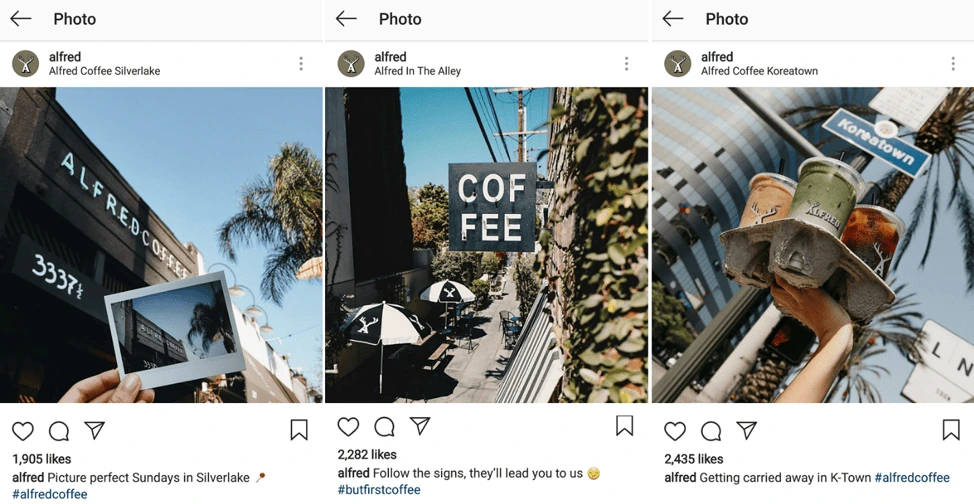
Source: Alfred
Once you’ve identified the feel of your brand and the colors you associate it with, fold that into the way you edit photos. Color has long been known to be a powerful force in marketing, and by post-processing images before you post them online, you can influence what they convey.
Use a similar editing style with your pictures so they all communicate your message—and slowly, users will connect that feeling to your brand. Away from your computer and need something quick? For extensive editing on the go, download a reliable photo application like Instasize to your mobile phone.
5. Do social media right
Last but definitely not least, make the effort to use Instagram right.
What does this mean? No matter the amount of content you share, and no matter how elaborate your photo editing is for each image, your efforts won’t matter if you don’t make use of the rest of the platform. Instagram has boomed—and so has its features.
One of the biggest don’ts of Instagram right now is to post strictly to the feed only. Instagram also has Stories and IGTV, the former of which can be an informal way to connect with your customers, while the latter gives space for long-form videos that followers would otherwise miss.
Of course, don’t let all your efforts towards keeping your visual identity end with social media. After all, using Instagram is just one step in the marketing funnel. Creative consistency builds trust, showcases reliability and improves customer perception—especially in visual branding. Keep your branding consistent across touchpoints before, during and after purchase, and you’ll be crafting a brand story customers won’t forget any time soon.
